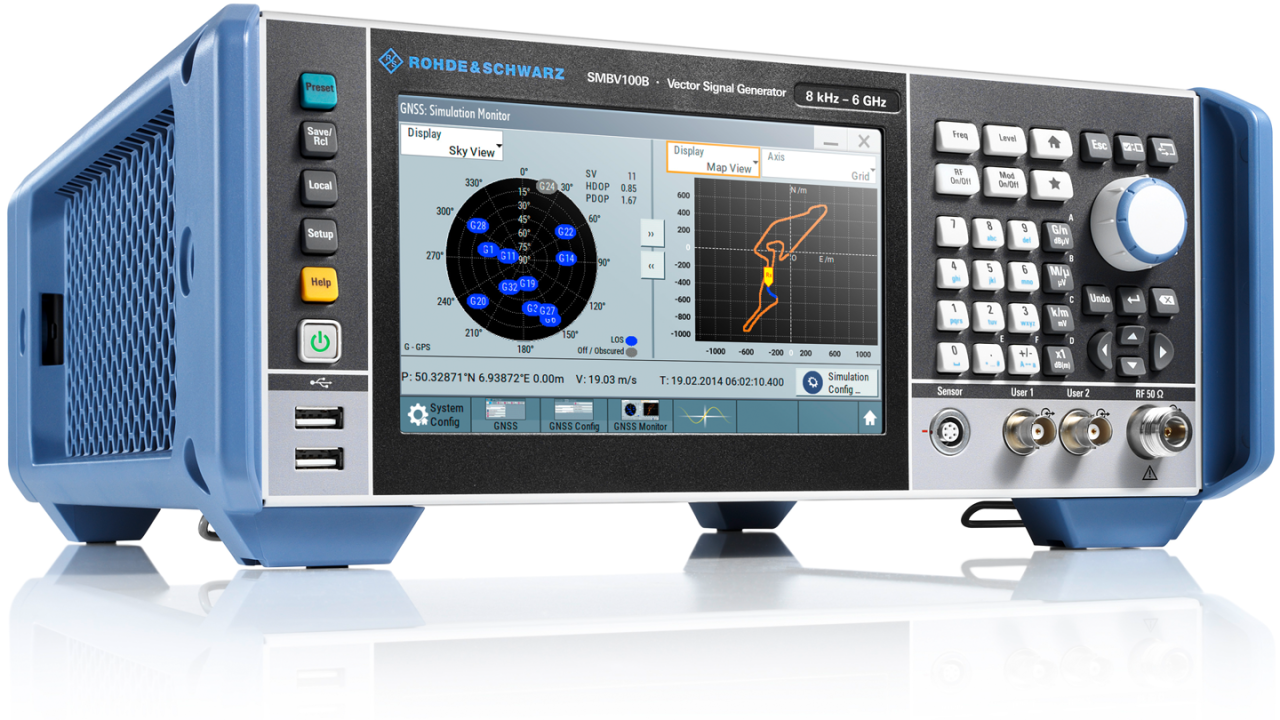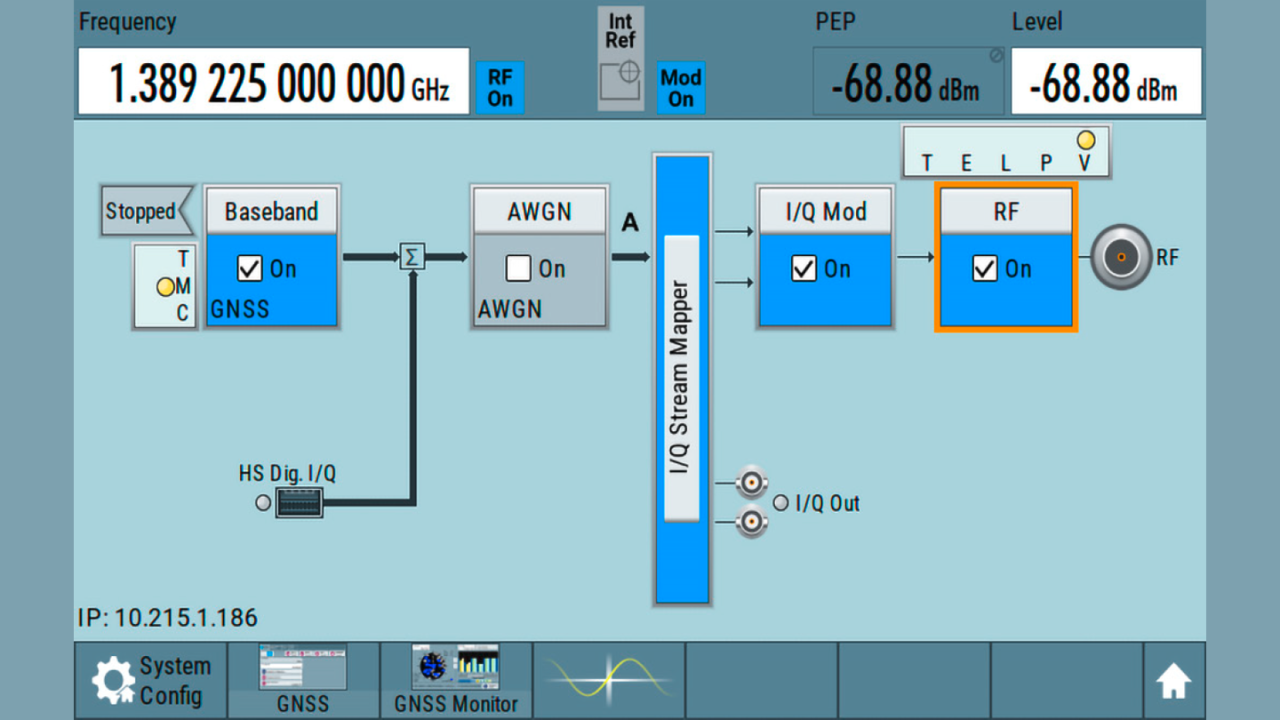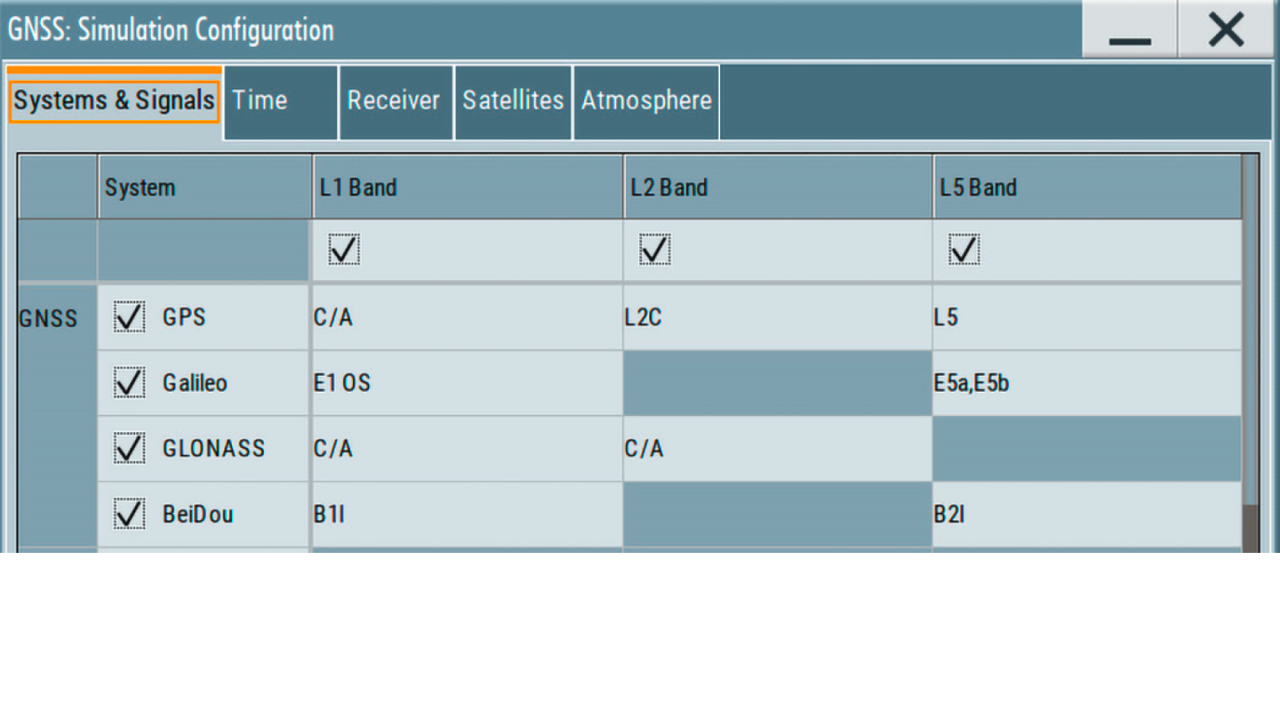Simple testing of multi-frequency, multi-constellation GNSS receivers
The R&S®SMBV100B vector signal generator can be turned into a multi-frequency, multi‑constellation GNSS simulator for receiver tests in the lab.

The R&S®SMBV100B vector signal generator can be turned into a multi-frequency, multi‑constellation GNSS simulator for receiver tests in the lab.


All available global navigation satellite systems (GNSS), including modernized GPS, GLONASS, Galileo and BeiDou, already offer, or at least have planned, positioning services on multiple frequencies in the L-band. Using various signals on different carriers helps significantly improve a receiver’s position estimation (navigation solution) in terms of accuracy, reliability and resilience to interference. This is because receivers working on L1, L2 and L5 signals are able to calculate the ionospheric delay and, as a result, remove the corresponding position error. Considering all available GNSS, there are more than 120 navigation satellites in space. On average, around 30 satellites are visible from most locations around the world. Each of these space vehicles (SV) provides multiple positioning services on different frequencies. The signals of the visible satellites are not only received via line of sight (LOS), but are also reflected from nearby buildings or other obstacles.
Obviously, the requirements on the receiver side increase with the evolution in GNSS constellations, and realistic simulations become more complex and computationally expensive.
Engineers developing new receivers capable of multiconstellation signal processing require a highly accurate and versatile simulator to validate functionality and performance. The simulator must be able to provide extremely realistic signals for any combination of GNSS (e.g. GPS, Galileo, GLONASS, BeiDou) and frequencies. Therefore, its channel budget has to be large enough to cover all visible SVs, the high number of positioning services (such as L1 C/A or E1 OS) and also the reflected echoes. And engineers must be able to take into account signal propagation characteristics such as tropospheric and ionospheric effects, system characteristics such as orbit and clock errors and the user environment, e.g. shadowing or other impairments.


The R&S®SMBV100B can generate GNSS signals for all frequency bands at once, simplifying multi-frequency test setups.
Thanks to its flexible option concept, the R&S®SMBV100B can be used for a wide variety of test cases. Starting with single-frequency signals for receiver development and production testing, the GNSS simulator can be upgraded by software to support multi-constellation, multi-frequency scenarios, which allows advanced receiver characterization and performance testing.
A multitude of different scenarios with GPS, Galileo, GLONASS and BeiDou signals can be generated in real time with up to 102 channels. For the receiver, the simulated location can be static, but users can also import waypoint files to set up dynamic scenarios. Even changes of the vehicle’s attitude can be simulated. The antenna pattern can be changed individually and the installation location of the antenna can be set. Potential shadowing caused by the antenna housing can be modeled using vehicle body mask files.


Fig. 2: Multi-constellation, multi-frequency scenarios can be configured in an easy, user-friendly and efficient way with the GNSS simulator of the R&S®SMBV100B.
Configuring multi-frequency scenarios
Thanks to the high modulation bandwidth of the R&S®SMBV100B, it is possible to simultaneously generate signals for all important GNSS frequency bands such as L1, L2 and L5 on only one RF output without the need for additional equipment such as external combiners. This makes testing multi-frequency receivers much simpler.
To evaluate the error mitigation capabilities of multi-frequency receivers, different ionospheric models can be applied. Standard models such as the Klobuchar model used by GPS or the NeQuick model proposed by Galileo are available, but historical models can also be loaded.
Using multiple GNSS constellations
The R&S®SMBV100B can generate signals for up to 102 channels from different GNSS to support receiver tests with complex test signals. This makes it easy to set up realistic scenarios where SVs from multiple GNSS are present. For example:
| System | No. of SVs | Signals | No. of channels |
|---|---|---|---|
| GPS | 8 | L1 C/A, L5 | 8 × 2 = 16 |
| Galileo | 8 | E1 OS, E5a, E5b | 8 × 3 = 24 |
| GLONASS | 7 | L1 C/A, L2 C/A | 7 × 2 = 14 |
| Total | 23 | 54 |
If the test case requires a mixed GNSS signal with a predefined minimum and maximum number of satellites, these limits can be set per GNSS. All satellites can be manually switched on or off on-the-fly, i.e. the simulation is not interrupted.
It is also possible to vary the individual power levels or assign pseudorange errors to each satellite without recalculating the scenario – ideal for testing the receiver autonomous integrity monitoring (RAIM) capabilities of a receiver. The real-world situation of disappearance and reappearance of satellites can be observed on the built-in simulation monitor (see Fig. 3).


Fig. 3: GNSS constellations and satellite power levels can be observed on the built-in simulation monitor.
Benefits and key features
The R&S®SMBV100B is the perfect solution for testing multi-constellation receivers. It ensures realistic and repeatable test conditions in a controlled lab environment with the following key features: